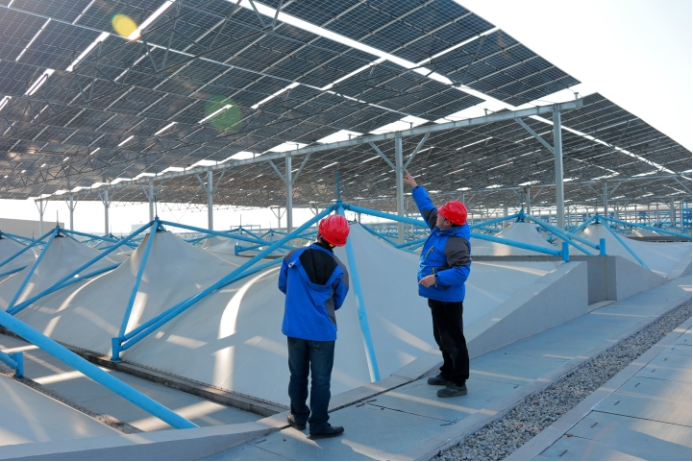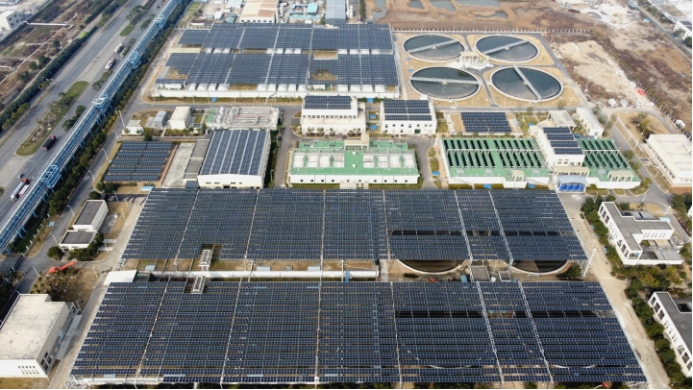To help reduce pollution and carbon emissions, Ningbo Zhenhai Lanshan Water Purification Plant has become a power generation expert
On January 9, the 5.9MWp distributed photovoltaic power generation project of Ningbo Water Environment Group Lanshan Water Purification Plant, located in Zhenhai District, Ningbo City, was laid and connected to the grid for power generation.
Lanshan Water Purification Plant is currently the largest domestic sewage treatment plant in Ningbo, with a daily sewage treatment capacity of 350,000 tons and 24-hour uninterrupted operation. In response to the call for "pollution reduction and carbon reduction", the plant introduced a photovoltaic power station project last year and added a large-scale "power bank" in the factory.

The photovoltaic project covers an area of about 69,000 square meters, and a total of 10,852 photovoltaic modules are installed according to the scheme of "self-generation and self-consumption, surplus electricity on the grid". The project was launched in June last year, involving 27 inverters and 3 box transformers, which were jointly integrated into the 10kV switch station, and a total of 7,500 meters of pile foundation and 800 meters of 10kV collector lines were built.
When fully operational, the PV project is expected to generate an average of 5.54 million kWh of electricity per year. Compared with thermal power generation, the project can save an average of 1,707 tons of standard coal, reduce carbon dioxide emissions by 4,803 tons, sulfur dioxide emissions by 166 tons, and nitrogen oxide emissions by 15.8 tons per year, effectively promoting regional pollution reduction and carbon reduction.
Lanshan Water Purification Plant is mainly a sewage treatment unit, and most of them are large-span pool structures. In order to make full use of land resources and not affect the normal operation of the sewage treatment system, in addition to arranging fixed photovoltaic modules on the roofs of some existing buildings, flexible brackets are used to install modules above the secondary sedimentation tank and biological pool.

In mid-air, photovoltaic panels are neatly arranged above the factory area, shining in the sunlight, continuously converting light energy into electricity; under the photovoltaic panels, urban wastewater is treated and turned into treasure, and reclaimed water as the "second water source of the city" is committed to alleviating the problem of urban water shortage and playing a vital role in "quenching thirst" for the city.
"Power generation at the top, production at the bottom, dual-use, resource sharing. According to the relevant person in charge of Lanshan Water Purification Plant, "photovoltaic power generation will not only not affect production, but also can shield the secondary sedimentation tank, which can effectively inhibit the growth of algae in the water in the pool and reduce the frequency of manual cleaning; In a real sense, it embodies the concept of 'water-light integration' and is a classic application of the 'photovoltaic +' model. ”
The construction of photovoltaic power stations has injected renewable energy into the water purification plant, skillfully applied solar energy resources, and achieved effective conservation of non-renewable fossil resources, greatly reducing energy consumption and pollution emissions.
It is also understood that Ningbo Water Environment Group Xinzhou Water Purification Plant also has a photovoltaic project of the same scale that is being piloted. After the completion of the project, the photovoltaic facilities of the two water purification plants can save about 11.34 million kWh of electricity for Ningbo every year, reduce carbon emissions by about 9,826 tons, and produce electricity to meet the annual electricity demand of more than 5,600 households.







